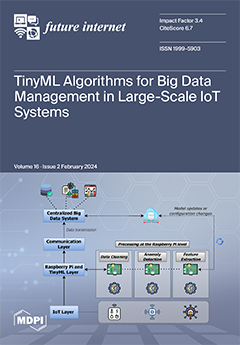Over the past decade, there has been a remarkable acceleration in the evolution of smart cities and intelligent spaces, driven by breakthroughs in technologies such as the Internet of Things (IoT), edge–fog–cloud computing, and machine learning (ML)/artificial intelligence (AI). As society begins to
[...] Read more.
Over the past decade, there has been a remarkable acceleration in the evolution of smart cities and intelligent spaces, driven by breakthroughs in technologies such as the Internet of Things (IoT), edge–fog–cloud computing, and machine learning (ML)/artificial intelligence (AI). As society begins to harness the full potential of these smart environments, the horizon brightens with the promise of an immersive, interconnected 3D world. The forthcoming paradigm shift in how we live, work, and interact owes much to groundbreaking innovations in augmented reality (AR), virtual reality (VR), extended reality (XR), blockchain, and digital twins (DTs). However, realizing the expansive digital vista in our daily lives is challenging. Current limitations include an incomplete integration of pivotal techniques, daunting bandwidth requirements, and the critical need for near-instantaneous data transmission, all impeding the digital VR metaverse from fully manifesting as envisioned by its proponents. This paper seeks to delve deeply into the intricacies of the immersive, interconnected 3D realm, particularly in applications demanding high levels of intelligence. Specifically, this paper introduces the
microverse, a task-oriented, edge-scale, pragmatic solution for smart cities. Unlike all-encompassing metaverses, each microverse instance serves a specific task as a manageable digital twin of an individual network slice. Each microverse enables on-site/near-site data processing, information fusion, and real-time decision-making within the edge–fog–cloud computing framework. The microverse concept is verified using smart public safety surveillance (SPSS) for smart communities as a case study, demonstrating its feasibility in practical smart city applications. The aim is to stimulate discussions and inspire fresh ideas in our community, guiding us as we navigate the evolving digital landscape of smart cities to embrace the potential of the metaverse.
Full article





